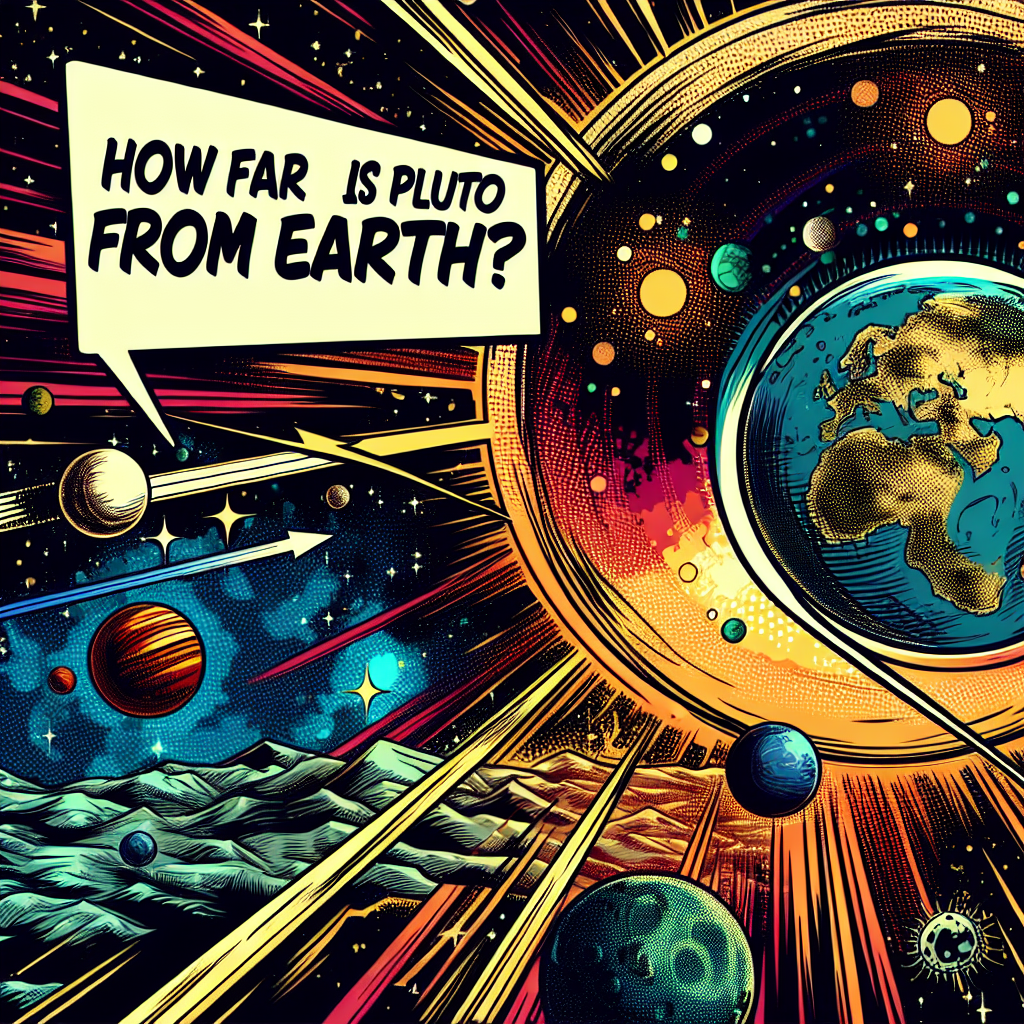The average distance from the Earth to Pluto is about 3.67 billion miles (5.9 billion kilometers). To put that in perspective, consider this: if you were to drive your car to Pluto at a steady 60 miles per hour (97 kilometers per hour), it would take you about 67,000 years to get there. That's a long road trip!
Now, let's talk about why Pluto's distance from Earth varies. Pluto's orbit is not a perfect circle, but rather an ellipse. This means that sometimes Pluto is closer to the Sun and Earth, and sometimes it's farther away. At its closest point (called perihelion), Pluto is about 2.66 billion miles (4.28 billion kilometers) from the Sun and Earth. At its farthest point (aphelion), Pluto is about 4.67 billion miles (7.52 billion kilometers) away.
To understand just how vast these distances are, let's look at how long it takes spacecraft to travel to Pluto. The fastest spacecraft ever built, New Horizons, took about 9.5 years to reach Pluto after launching from Earth in 2006. Even traveling at an incredible 36,000 miles per hour (57,936 kilometers per hour), it took New Horizons nearly a decade to cover the enormous distance to Pluto.
One reason Pluto is so far away is that it's part of a region of the solar system called the Kuiper Belt. The Kuiper Belt is a vast, icy desert filled with small, rocky objects and dwarf planets like Pluto. It's a remnant of the early days of the solar system, when gravity was still shaping the planets and their orbits.
Pluto's orbit overlaps with the Kuiper Belt, which means it's part of a larger population of objects that are all gravitationally bound to the Sun. Think of it like a big, cosmic family: the Sun is the parent, and the planets, dwarf planets, and other objects in the solar system are all siblings of varying sizes and distances.
To give you an idea of just how remote Pluto is, consider this: the Sun appears as just a tiny, faint dot in the sky from Pluto's surface. It's a mere 1/9th the size it appears from Earth, which is why Pluto is so incredibly cold – it gets very little warmth or light from the Sun.
Despite its great distance, Pluto is still part of our solar system, and its orbit is influenced by the gravity of the Sun and other planets. In fact, Pluto's orbit is so affected by Neptune's gravity that the two objects are in a 3:2 orbital resonance. This means that for every three laps Neptune takes around the Sun, Pluto takes two.
Pluto's distance from Earth also makes it extremely difficult to study. Because it's so far away, Pluto appears very small in the sky, making it hard to observe with telescopes. It's like trying to spot a small ant crawling on the sidewalk from a mile away – it's a real challenge!
However, astronomers have developed clever ways to study Pluto from afar. By observing how Pluto's light changes as it orbits the Sun, scientists can learn about its composition, atmosphere, and even its moons. It's like analyzing the faint echo of a whisper from across a vast, cosmic canyon.
In recent years, scientists have discovered new objects in the Kuiper Belt that are similar to Pluto. These objects, like Eris and Makemake, are also dwarf planets, and they're helping us learn more about the formation and evolution of our solar system.
Finally, let's talk about why Pluto's distance from Earth is important. By studying Pluto and other objects in the Kuiper Belt, we can gain insights into the early days of the solar system and how it came to be the way it is today. It's like studying the fossil record of the cosmos, and Pluto is one of the most fascinating and enigmatic fossils of all.
In conclusion, Pluto's distance from Earth is just one aspect of its fascinating and complex nature. By exploring Pluto and the Kuiper Belt, we're not just learning about a small, icy world – we're uncovering the secrets of the solar system itself.

Popular Space Questions
Find answers to the trending space questions being asked by our community on social media.
- How many galaxies are there in the universe?
- How far is Pluto from Earth?
- How many planets are in the Milky Way?
- What would happen if a rogue planet entered our solar system?
- How many planets are in our solar system?
- How big is the Earth?
- What are the planets in order?
- How big is the universe?
- What if we found a way to manipulate gravity?
- What would happen if a pulsar's beam hit Earth?